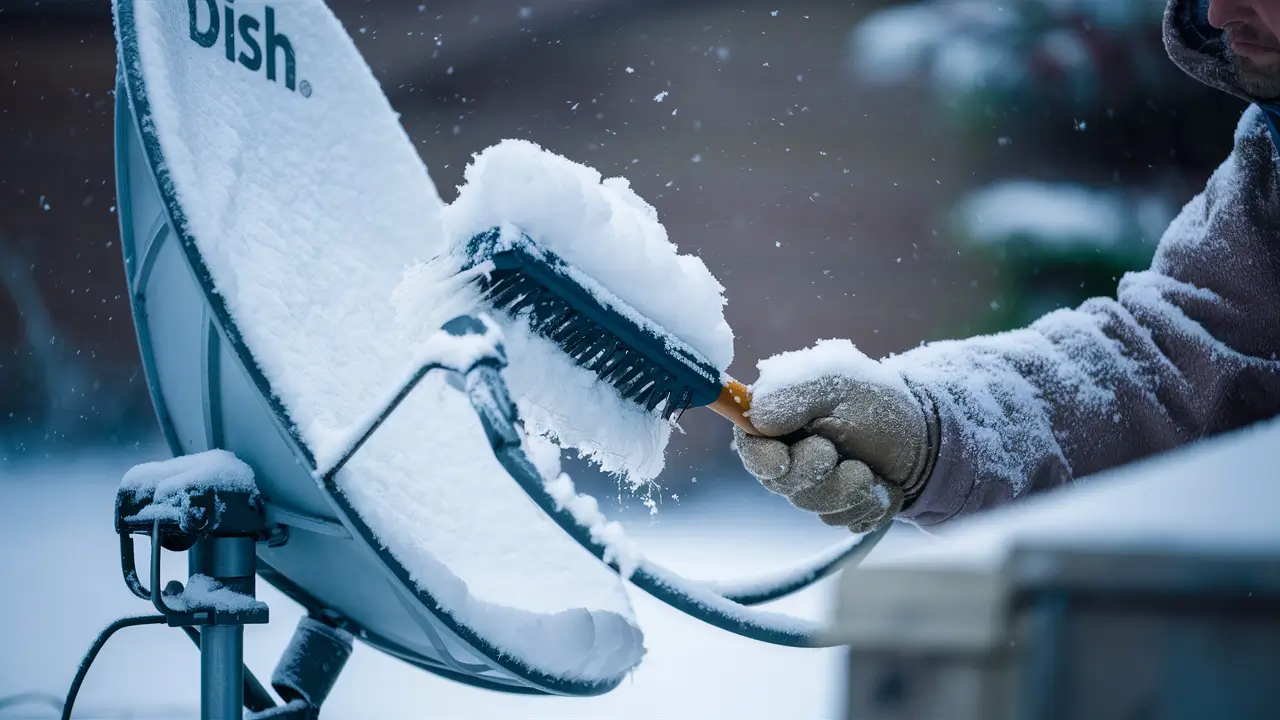
In other instances, snow hails may accumulate on your satellite DISH NETWORK, which can cause a poor signal or hinder the reception of satellite TV. The snow also does not allow the satellite signals to penetrate through and get to your dish as they should. Thankfully, removal of the snow is not as challenging as one may think since it involves some simple steps. Here are some tips for safely and effectively removing snow from your satellite dish:
What You'll Need:
- Sturdy ladder
- Soft-bristle broom
- Car scratch remover (should not be sharp or metallic)
- A wooden stick or a plastic tool to reach different parts of the body that cannot be easily reached.
- This category is important in providing protection for hands through the use of gloves.
- Warm hat and boots for outdoor job
Assess Safety First
If you are going to climb up to remove snow from the satellite dish, ensure that the ladder is firmly placed on the snow or on an icy surface. If the conditions are slippery, you should have a person to hold the ladder while you are climbing up and down. Do not try to clear the snow in terrible weather that presents other risks like lightning, stiff winds or massive ice formations.
Proper tools should always be used when clearing the snow because they help in preventing damages to vehicles and enhances safety.
When cleaning the snow, do it in a gentle manner so that you do not harm the surface of the satellite dish. Metal shovels or scrapers may scratch the dish. A soft bristle broom will be used to sweep snow off most parts of the dish without the risk of scratching the surface. A plastic scraper may be useful for larger sheets of ice. For difficult to reach areas around the rim or bottom of the dish, one may use a gloved hand or wooden stick.
Clear Snow Completely
It is your aim to clear all of the snow and ice off the surface of the satellite dish in every area. It is important to note that the curved dish area should be exposed fully to receive signal as required. Make sure there is no area on your roof that is either covered in snow or ice. Any remaining accumulation in a small area is enough to obstruct satellite signals.
Remove Snow from Stand and Mounting also
Besides the dish surface, one should also clear the snow and ice off any point that is a part of the framework and connected to the dish, like the stand, pole mount, or roof assemblies. Deposition on these components can add load that puts the integrity of the satellite equipment in jeopardy in the long run.
Shovel Snow Off Surfaces In The Surrounding Environment
Begin around the immediate vicinity of the satellite dish and remove large snow piles or thick sheets of ice that may be within one or two feet of the dish. Large amounts of snow on a roof or a nearby wall can also damage the equipment in case the weight exceeds the structural capacity of the structure supporting it.
See the Coaxial Cables Accessibility
Gently wipe off any snow, ice or moisture that might be on the coaxial cables that feed into the LNB of the satellite dish. Water in the form of ice and snow can infiltrate these junctions, and when water enters the inside of the cable line, it interrupts or damages satellite signals and transmission.
When To Call A Professional
If you are still unable to safely reach or properly clear off your satellite dish, it is always safer not to climb up the rooftop to remove heavy snow. For difficult or risky snow removal missions, it is advisable to contact your satellite service provider or an expert in the installation of antennas. Technicians are in a position to handle any difficult location for the dish installation since they have appropriate tools to access the areas.
Recheck Reception
After removing the snow, get back into your house and ensure that normal satellite programming has resumed on the receiver and TV. Turning the channels on your satellite system is a sure way of making sure that your efforts paid off and that the signals are flowing as they should. Watch TV all winter without any interruption!
Preventative Measures
Lastly, if you have further concerns about snow accumulating on your satellite dish in the future, you can have weather shields or covers added. Some dishes come equipped with little heating coils around the edges which help melt small deposits over a period of time. Speak with your satellite provider about equipment or special arrangements to prevent snow from affecting your dish during storms. Taking time to prevent such eventualities will save you a lot of time and energy in the long run.
Be Safe While Clearing the Snow
However, never risk your life just to remove the dish and gain signal strength back to normalcy. Be patient, always use appropriate tools, dress warm for winter, and seek help if you feel unsafe climbing slippery roofs or railings. To avoid getting hurt there is need to exercise caution when handling any outdoor task during cold and snowy weather. Take care of your satellite dish and ensure that signals have been received before halting the snow clearing process. With such an approach, satellite entertainment will be provided uninterrupted for many years during the winter season only!
Ready to upgrade your TV experience? Call us now at (877) 471-4808 to find the perfect Dish Network plan for you! Don’t miss out on great entertainment—our team is here to help you choose the best package and get you started today.





